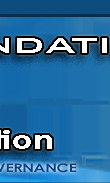Due
to the lack of family and personal resources, a lot of very
talented and promising students have a difficulty continuing
their education. Even with government subsidized tuition
fees, the students require living allowances for their daily
needs. It is necessary not only to provide the financial
resources to allow them to complete their education but
also to create awareness in them that the private sector
can provide the means to accomplish their goals. This will
in turn, will help the individual recipient develop values
that will make him/her a future proponent of the foundation’s
goals and aspirations. It is also the hope of the foundation
that they become dedicated to a career in public service
to uplift the lives of others in our community.
2005-2006 data from the Department
of Education (DepEd) indicates that there are already about
37,161 Public Schools in the Elementary level catering to
almost 13 million students. There is a great need to help
develop and provide basic educational infrastructures like
school buildings, instructional materials, audio-visual
facilities and computer units with internet access. These
are necessary for students primarily in the elementary level
to develop competencies when they continue their pursuit
for higher learning. The Cohort Survival Rates(CSR), the
proportion of enrollees at the beginning grade or year who
reach the final grade or year at the end of the required
number of years of study, are very low in several provinces.
Some CSRs are bordering at the 60% level and others even
going below 50%.
It
may only be improved if the facilities and the educational
tools are in order and available. Upgrading teaching methods
and the curriculum are also important to the overall educational
development of the student.
The
Third Elementary Education Project (TEEP), which was started
in 1997 recognizes the problems of the facilities of the
schools specially those that belong to the 22 poorest provinces
of the country. The main funders of the program are the
National Government, the World Bank and Japan Bank for International
Cooperation (JBIC). One of its aims is to improve the quality
of Public Elementary education by building the DepEd’s
capability to manage change. It also seeks to improve the
Pupil’s performance in terms of increasing the learning
and achievement rate, the participation rate and the completion
rate. It wishes to involve the community in a large-scale
effort to attain quality education. The government “is
slated to build 3,000 school buildings or 6,000 classrooms
every year which needs also to provide new desks and chairs,
books for the students, grant scholarship to qualified poor
families and put a computer in every school.”(See
attached article: Building of 3,000 Schools). Unfortunately,
the National Governments falls short in its obligations
to fund the projects due to the strains in the National
Budget caused by large budget deficit and international
and domestic loans that needs to be paid or serviced.
The
cuts in the Department’s budget, has hampered its
ability to continue to fund infrastructure projects that
are long overdue. Most classrooms and school buildings are
in such serious dilapidated state that it is no longer conducive
for students to hold classes. Besides, there is a large
shortage of classrooms to meet the yearly increase in the
number of students due to the high population growth rate.
The government has at times pegged the ratio of students
per classroom at 100:1 to mask the real situation of the
classroom shortage. It is already a “stretch”
to have 40 students per classroom what more a hundred. To
further burden the Department, it has to hire more teachers
and provide continuous training to enhance the deliverance
of the continuously changing educational curriculum.
A
training program is necessary to cater to the instructional
management needs of teachers determined through a school-based
training needs assessment. It will also enhance the teachers’
value formation, emphasizing the values of the commitment
to the education of the students.
The
TEEP is supposed to have completed its task at the end of
June 2006. It is now necessary for the private sector through
Foundations and NGOs to spearhead the development of these
educational institutions to supplement the anticipated shortfalls
in the government’s efforts. It will require a great
deal of financial resources to make a serious dent on the
need to upgrade the facilities and the educational materials
for the benefit of the public school students. The DepEd
has an ADOPT-A-SCHOOL program and several groups have stepped
forward to contribute to this program. The Chinese Chamber
of Commerce is one of the organizations that has taken up
the challenge and has constructed a great number of school
buildings/ classrooms to help address some of the shortfalls.
Even
if the funds are made available it is important to understand
how the funds will be utilized to maximize the benefit to
the students. The use of audio-visual mediums and computers
are now basic learning tools in most of the private schools.
The public schools should not be deprived of these tools
even it struggles to address basic facility requirements.
This is one way to possibly increase the Cohort Survival
Rate of schools.
The
teachers will have more energy and drive to encourage their
students to maximize their potential without having to worry
about a leaking roof, a flooding classroom or generally
an uncomfortable and none conducive learning environment.
Students also don’t have to miss classes due to poor
and defective facilities. It is hard enough for these students
to cope with the daily hardships of living given that their
parents are not necessarily economically well-off otherwise
they would have gone to private schools. The school environment
must provide a respite for them so as to achieve maximum
educational attainment.









